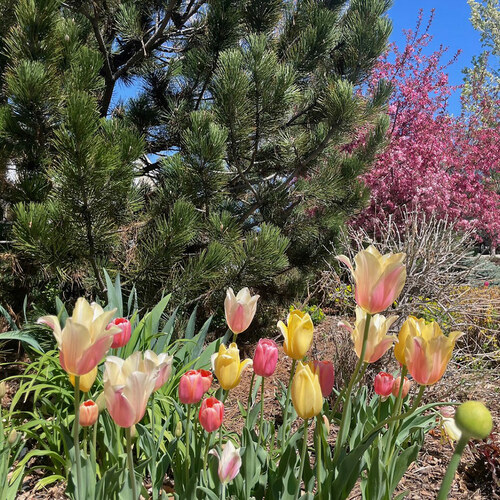
Hey GPODers!
Today we’re heading west and getting an update from Cathy Hollis in Colorado. We were first introduced to her garden, inspired by English borders, in 2022 (you can check out that submission here: Cathy’s Colorado Garden). But Cathy’s real garden inspiration is her sister Sally Barker, who has been featured on GPOD many times over the years (you can check out the latest post from Sally’s garden here: More in Sally’s Maryland Garden). We’re thrilled to be a small part of this family’s shared love of plants!
But that is enough yapping from me, enjoy Cathy’s own words on her sensational space:
Hi! I live in the suburbs south of Denver, Colorado. I have been enjoying the transition from early spring to late spring in my garden this year. We have a lot of peony bushes, and a bee hive as well.
One of the earliest perennials to bloom in our garden is cushion spurge (Euphorbia polychroma, Zones 4–8) (yellow plant), which can be invasive, but it does supply early nectar for the bees, and adds color to the spring garden. Our Prairifire crabapple tree (Malus x ‘Prarifire’, Zones 4–8) is always a standout.
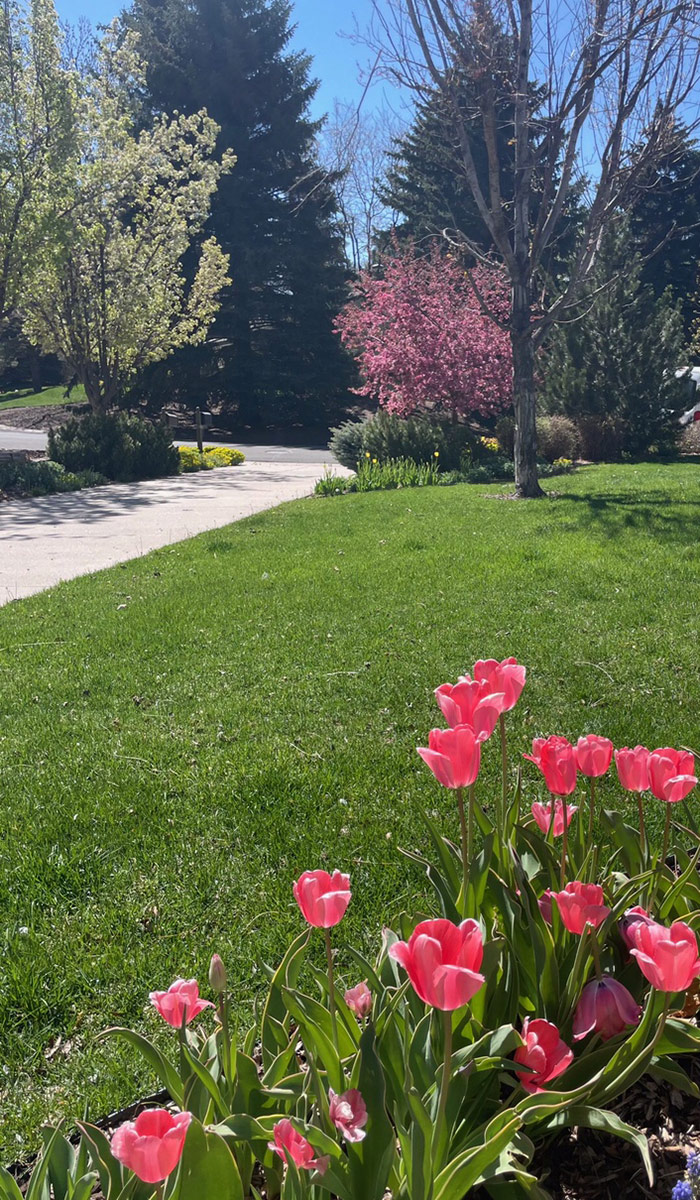 Design Impression tulips (Tulipa ‘Design Impression’, Zones 3–8) are hardy and long lasting. In background is a Chanticleer pear (Pyrus calleryana Chanticleer®, Zones 3–8) and the crabapple tree.
Design Impression tulips (Tulipa ‘Design Impression’, Zones 3–8) are hardy and long lasting. In background is a Chanticleer pear (Pyrus calleryana Chanticleer®, Zones 3–8) and the crabapple tree.
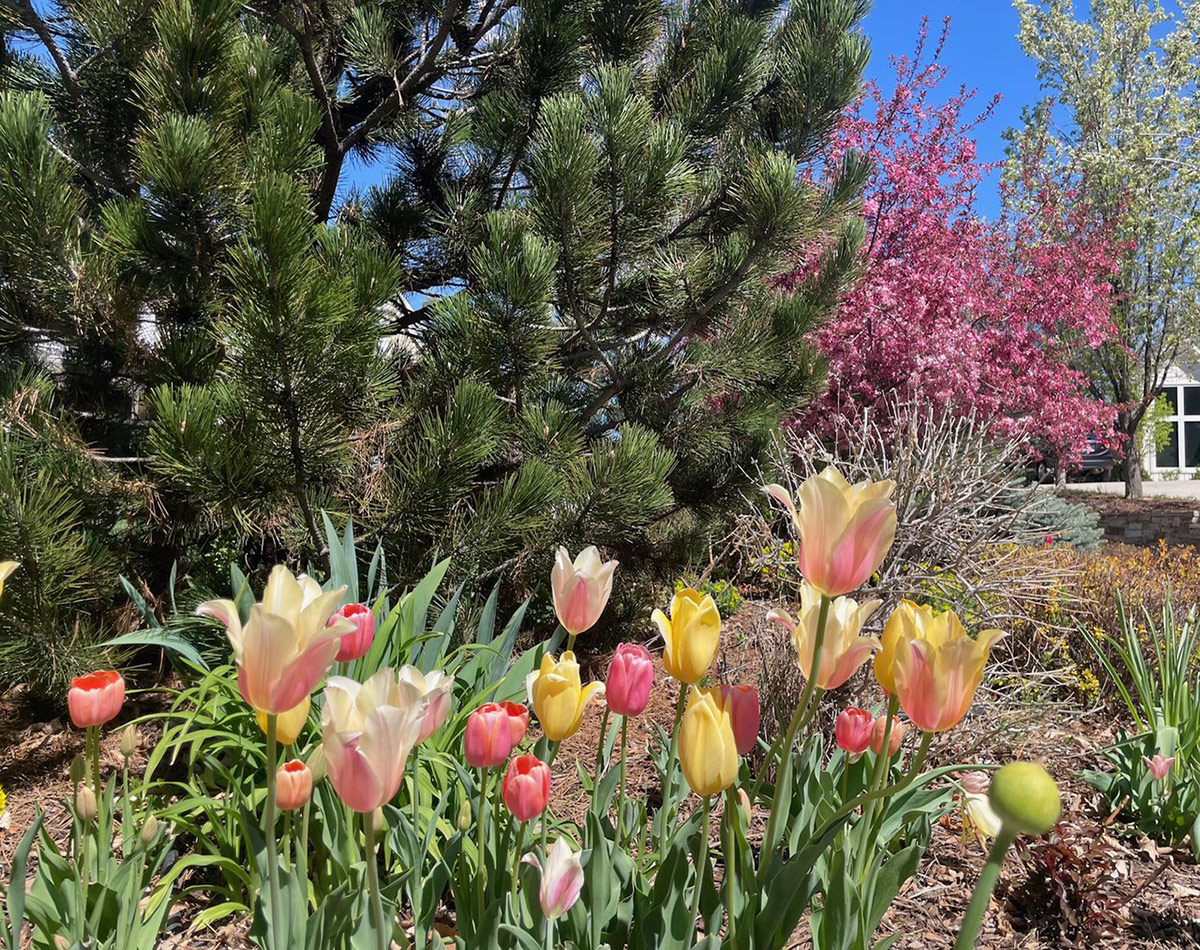 A show of late blooming tulips – Big Smile (yellow), Menton (pink), and Blushing Lady (pale yellow with light pink).
A show of late blooming tulips – Big Smile (yellow), Menton (pink), and Blushing Lady (pale yellow with light pink).
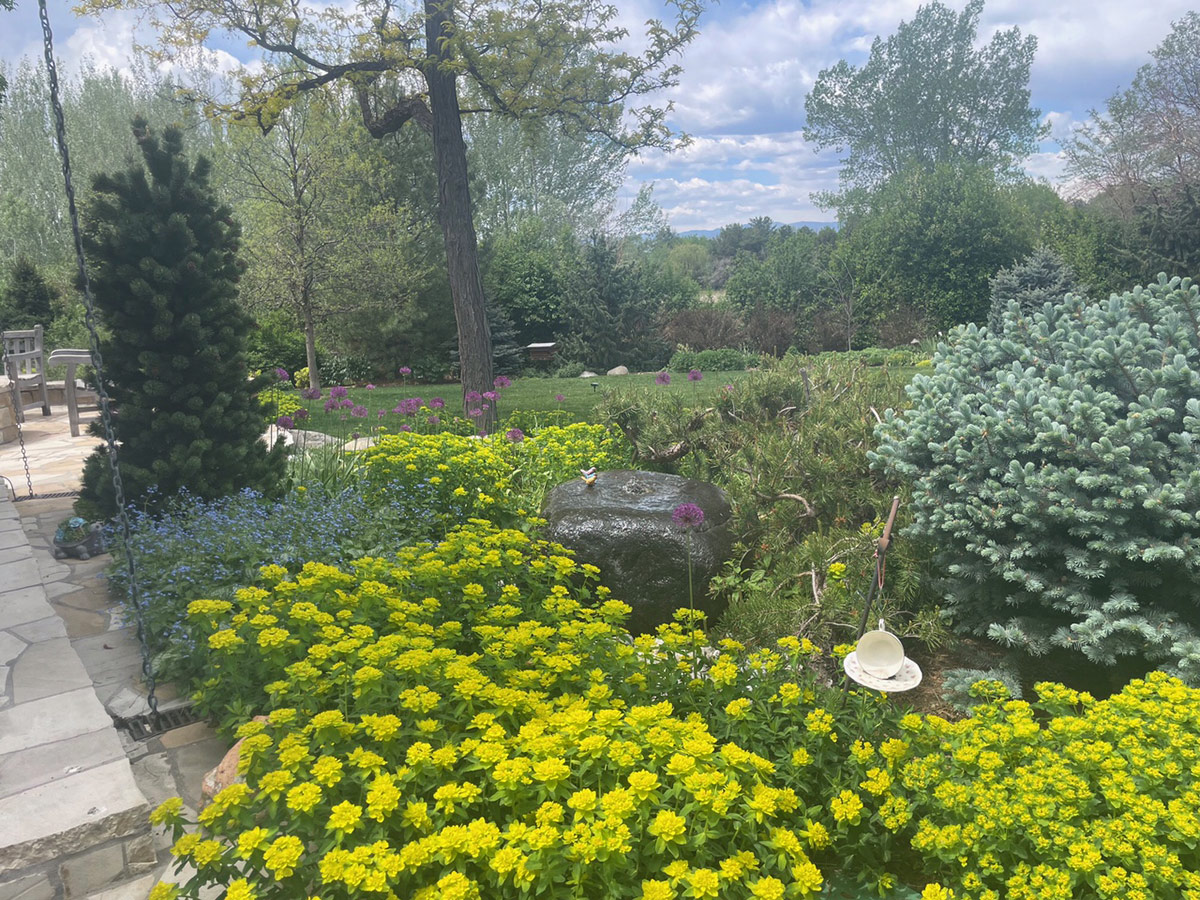 In our backyard, the Euphorbia polychroma really gives the garden an early show. Behind it, the blue flowers of Jack Frost brunnera (Brunnera macrophylla ‘Jack Frost‘, Zones 3–8) and Purple Sensation allium (Allium ‘Purple Sensation’, Zones 3–8) add contrast. The pine tree is Sherwood Compact Pine (Pinus mugo ‘Sherwood Compact’, Zones 2–7), a dwarf slow growing evergreen. The birds love to drink and bath in the large rock fountain. You can glimpse the front range of the Rocky Mountains in the background, as well as our beehive.
In our backyard, the Euphorbia polychroma really gives the garden an early show. Behind it, the blue flowers of Jack Frost brunnera (Brunnera macrophylla ‘Jack Frost‘, Zones 3–8) and Purple Sensation allium (Allium ‘Purple Sensation’, Zones 3–8) add contrast. The pine tree is Sherwood Compact Pine (Pinus mugo ‘Sherwood Compact’, Zones 2–7), a dwarf slow growing evergreen. The birds love to drink and bath in the large rock fountain. You can glimpse the front range of the Rocky Mountains in the background, as well as our beehive.
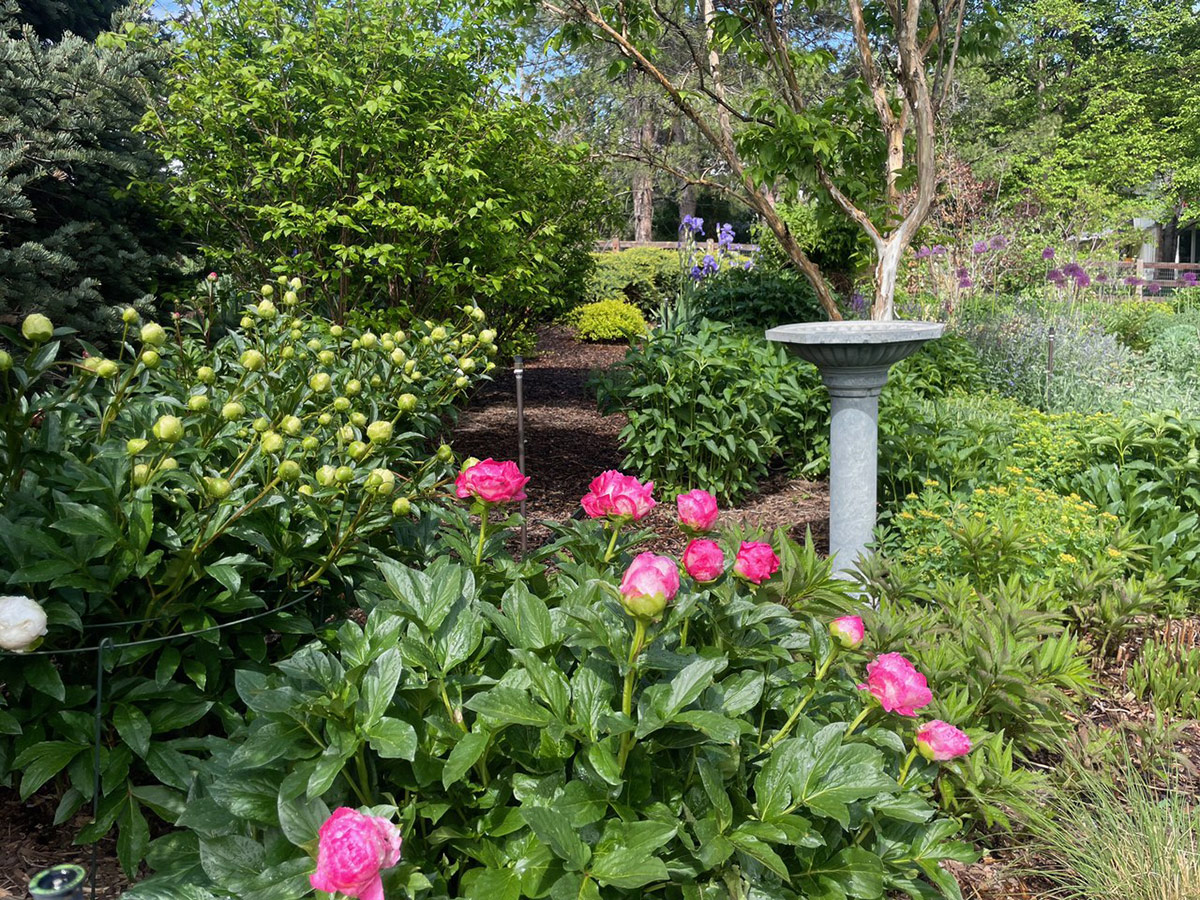 This pink peony is the earliest to bloom in our garden, I wish I knew its name!
This pink peony is the earliest to bloom in our garden, I wish I knew its name!
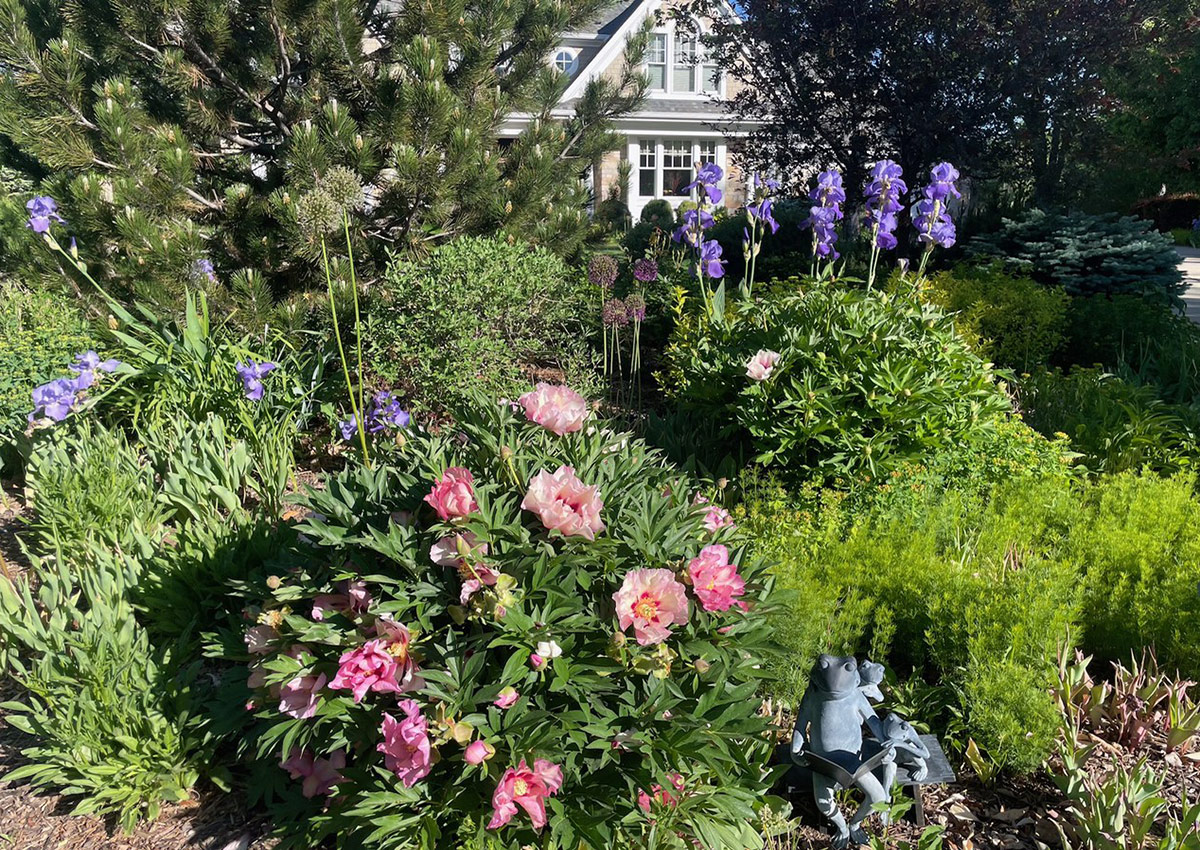 A little later in spring, the tulips have gone and the Julia Rose Itoh peony (Paeonia x ‘Julia Rose’, Zones 3–8) and purple bearded iris take over in our front garden.
A little later in spring, the tulips have gone and the Julia Rose Itoh peony (Paeonia x ‘Julia Rose’, Zones 3–8) and purple bearded iris take over in our front garden.
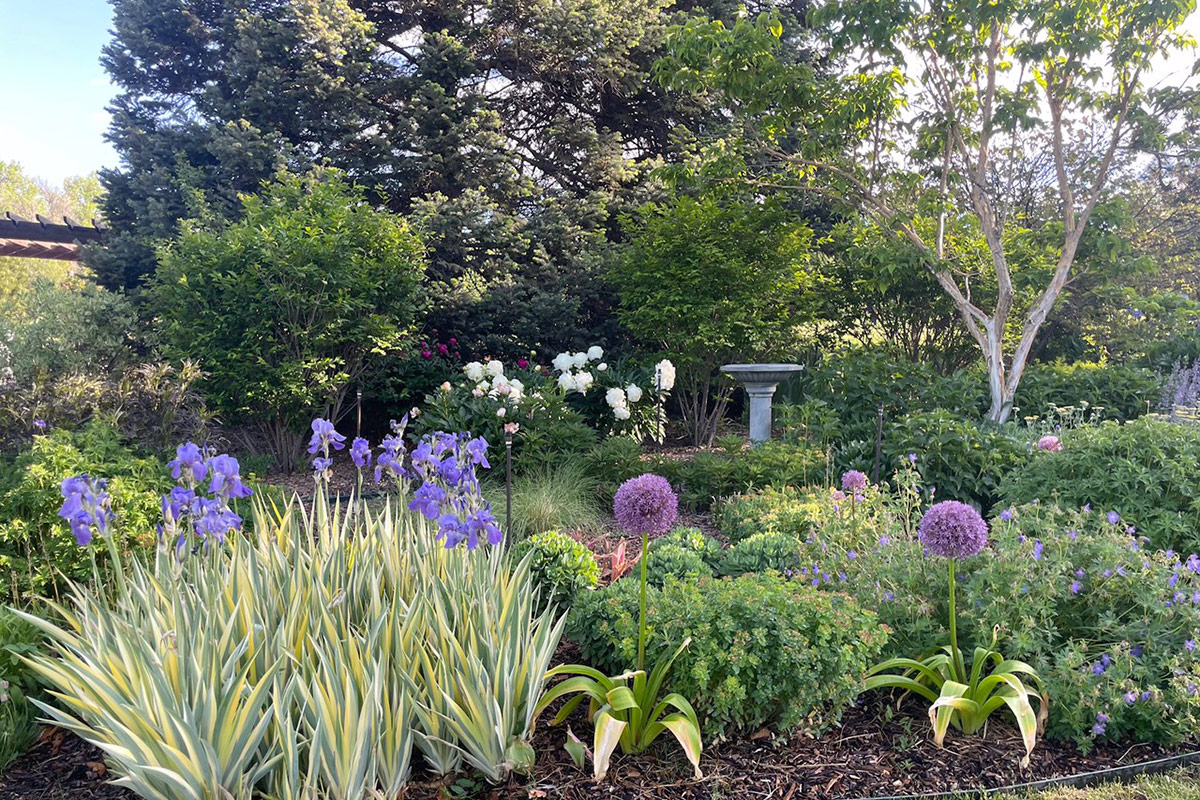 In the back garden, other herbaceous peonies and variegated purple iris (Iris pallida ‘Variegata’, Zones 4–9) start to bloom, along with the large flowers of ‘Pinball Wizard’ allium (Allium ‘Pinball Wizard’, Zones 4–8).
In the back garden, other herbaceous peonies and variegated purple iris (Iris pallida ‘Variegata’, Zones 4–9) start to bloom, along with the large flowers of ‘Pinball Wizard’ allium (Allium ‘Pinball Wizard’, Zones 4–8).
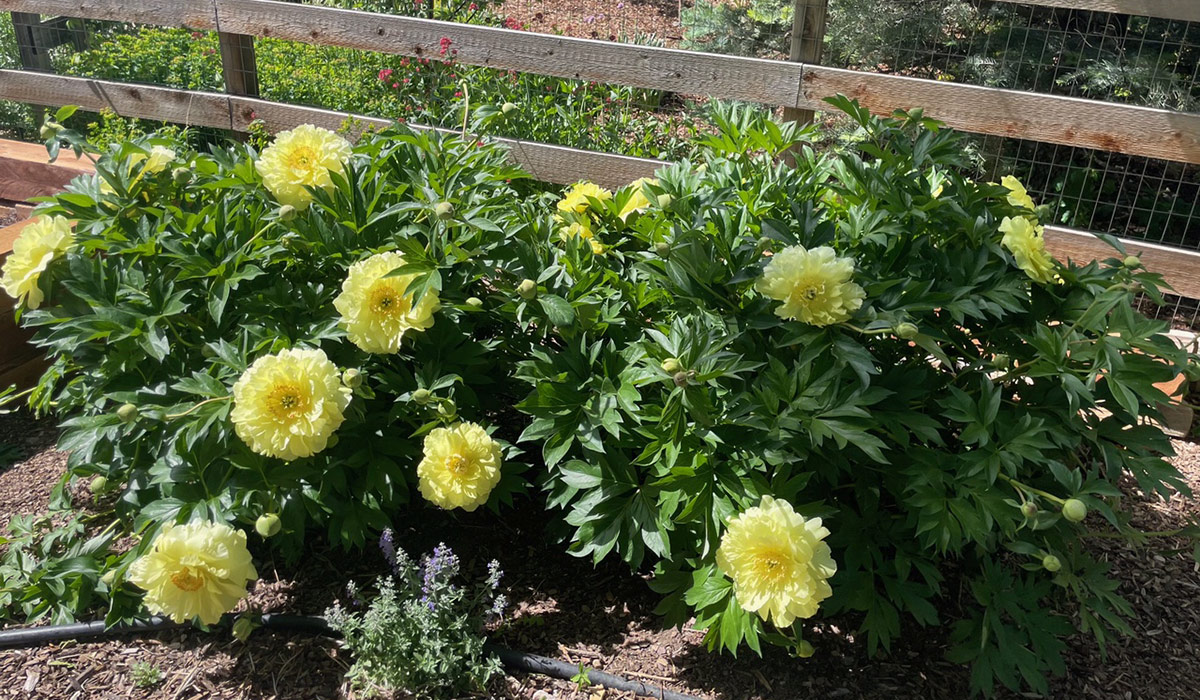 Bartzella Itoh peonies (Paeonia x ‘Bartzella’, Zones 4–9) in another part of the garden.
Bartzella Itoh peonies (Paeonia x ‘Bartzella’, Zones 4–9) in another part of the garden.
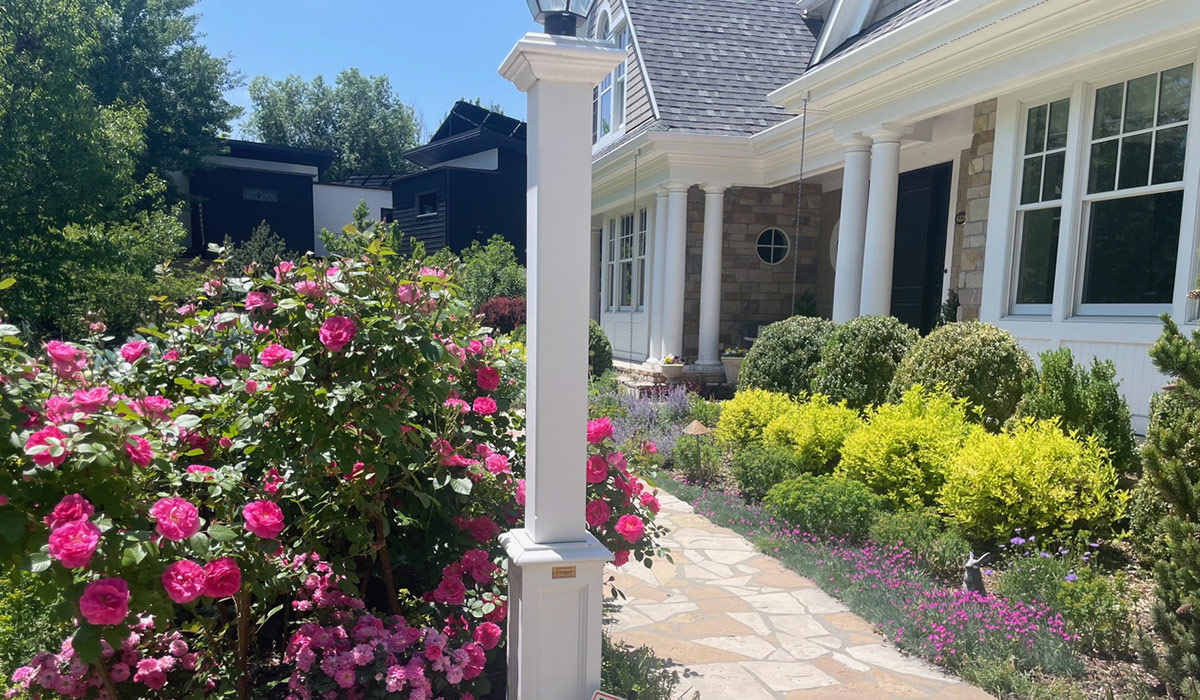 Around June 1st, our Morden Centennial rose bushes (Rosa ‘Morden Centennial’, Zones 4–9) start to bloom, and continue through the summer. On the right side of the walk, boxwood, ‘Limelight’ spirea (Spiraea japonica ‘Limelight’, Zones 3–9) and Firewitch dianthus (Dianthus gratianopolitanus ‘Firewitch’, Zones 3–9) provide a contrast.
Around June 1st, our Morden Centennial rose bushes (Rosa ‘Morden Centennial’, Zones 4–9) start to bloom, and continue through the summer. On the right side of the walk, boxwood, ‘Limelight’ spirea (Spiraea japonica ‘Limelight’, Zones 3–9) and Firewitch dianthus (Dianthus gratianopolitanus ‘Firewitch’, Zones 3–9) provide a contrast.
 At about the same time, the Moonshine yarrow (Achillea x ‘Moonshine’, Zones 3–8), Walker’s Low catmint (Nepeta x faassenii ‘Walker’s Low’, Zones 4–9), and May Night salvia (Salvia x sylvestris ‘May Night’, Zones 4–9) burst into bloom. The Temple of Bloom® Seven-Son tree (Heptacodium miconioides, Zones 5–9) provides 4 seasons of color and is a wonderful accent tree with white bark. The bees love when it blooms in August.
At about the same time, the Moonshine yarrow (Achillea x ‘Moonshine’, Zones 3–8), Walker’s Low catmint (Nepeta x faassenii ‘Walker’s Low’, Zones 4–9), and May Night salvia (Salvia x sylvestris ‘May Night’, Zones 4–9) burst into bloom. The Temple of Bloom® Seven-Son tree (Heptacodium miconioides, Zones 5–9) provides 4 seasons of color and is a wonderful accent tree with white bark. The bees love when it blooms in August.
Thank you for sharing your gorgeous garden with us again, Cathy. We’re very honored to have you and your sister as members of the GPOD community!
Have a garden you’d like to share?
Have photos to share? We’d love to see your garden, a particular collection of plants you love, or a wonderful garden you had the chance to visit!
To submit, send 5-10 photos to [email protected] along with some information about the plants in the pictures and where you took the photos. We’d love to hear where you are located, how long you’ve been gardening, successes you are proud of, failures you learned from, hopes for the future, favorite plants, or funny stories from your garden.
Have a mobile phone? Tag your photos on Facebook, Instagram or Twitter with #FineGardening!
Do you receive the GPOD by email yet? Sign up here.





